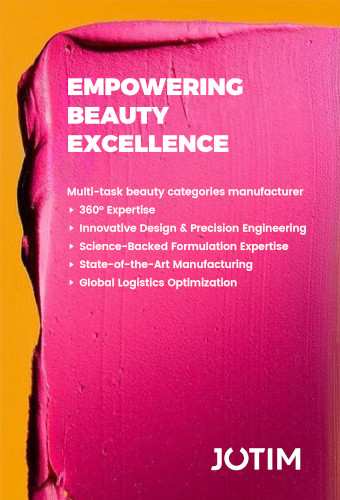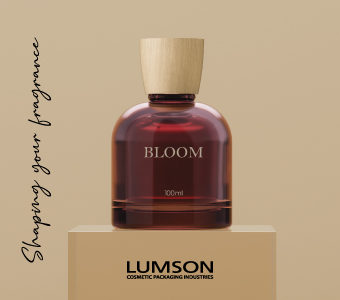
The last few weeks have been rough for cosmetic manufacturers. The safety of their products, which is a regulatory requirement, has come under fire. Charges have multiplied with cosmetics successively accused to pollute indoor air, to contain substances potentially harmful for babies or for everybody…
Answers from the industry
Each time, the industry tried to respond. Regarding indoor air quality, the Cosmetic, Toiletry & Perfumery Association (CTPA) explained that media reports linking the use of personal care products and harmful indoor air quality were “based on a misrepresentation” of a report issued by the Royal College of Physicians and the Royal College of Paediatrics and Child Health. Indeed, the report is very clear, when it comes to the quality of indoor air, as few substances such as cigarette smoke and carbon monoxide are pointed out as very serious hazards. While personal care products may contain VOCs, the report clearly says: “Although they are very common in the air, their health effects are generally minor.”
Similarly, the French Federation of Cosmetics Makers (Fédération des entreprises de la beauté - FEBEA) immediately responded to the publication of the reports from Women in Europe for a Common Future (WECF) and UFC-Que Choisir.
As far as baby products are concerned, FEBEA reminded that all cosmetic products marketed in Europe are subject to a safety assessment and that specific and reinforced procedures apply to cosmetic products intended for children under three years of age.
It is the same for substances in the products. When a potentially hazardous substance is identified, the European Commission may, where appropriate, prohibit or limit its use to ensure that it presents no hazard. "For the scientific authorities, there is no question of accepting that legislation would not be up to date," highlights the Federation.
For several years, the representatives of the cosmetics industry have also created websites to provide answers to consumer concerns: ParlonsCosmetiques.com in France, The Facts About Cosmetic Products in the United Kingdom, and CosmeticsInfo.org in the United States.
Who’s benefiting from scare stories?
However, one must admit that the industry’s arguments hardly emerge from the mass of scaring stories. It is likely that the opinions of cosmetics makers are regarded with suspicion due to their supposed bias.
But when whistle-blowers themselves temperate their previous affirmation, or the way they were interpreted, they face the same difficulties. UFC-Que Choisir has just published a new article strongly moderating some of the conclusions that were drawn from its previous report (in French). Let’s bet it will not make much ado.
In this case, the media mechanics are to blame. In a basic economic calculation, media tend to prefer sensational news generating high audience levels (or a lot of clicks) rather than complex and costly investigations that are much less impactful.
Moreover, the behaviour of cosmetics makers, which are eager to maximize sales, does not always help to clarify things. When consumers began to be suspicious about parabens, many brands have seen it as a business opportunity, either because they never used parabens, as for natural or organic brands, or because they were able to quickly reformulate their products. The “paraben-free” claim becoming a commercial argument, it confirmed consumers’ worries. Despite the lack of conclusive studies and despite (or because of) frequent confusions between different types of molecules, the arguments of experts defending parabens have fallen flat. Today, among the substances blamed for their potentially harmful effects are materials such as methylisothiazolinone (MIT), which have been used to replace parabens.
History repeats itself and scaring stories about endocrine disruptors in cosmetics are leading to the emergence on the marketi of cosmetics claiming to be “free from endocrine disruptors”. [1]
What about consumers?
For Celine Couteau and Laurence Coiffard, who teach cosmetology at the University of Nantes’ Faculty of Pharmacy, these alarming reports mix very different things. In a recent opinion paper (in French) the two scientists criticized "excessively scaring information" that "creates confusion between irritating molecules, allergens and endocrine disruptors."
Legitimate criticism about the honesty of so-called hypoallergenic products containing well-known allergens (such as MCI and MIT), are placed alongside questions on possible endocrine disruptors, for which there is no scientific consensus. Such confusion greatly complicates the response from the industry. "Different and incomparable things are placed at the same level," Céline Couteau told Premium Beauty News. “It is as absurd as to say that a food market is full of allergenic products such as strawberries or photo-sensitizers such as celery.”
Will consumers eventually benefit from these polemics? It is very unlikely according to Céline Couteau. "In my opinion, it is not in the interest of consumers to cry wolf constantly. This can lead to remove molecules that are not perfect but that have a very well known spectrum. The risk is that they are replaced by apparently less problematic substances for which we actually lack of detailed information."
Meanwhile consumers seem rather puzzled. According to a recent survey by Toluna for the magazine Challenges, nearly a quarter (24.8%) of respondents in France believe that the safety of products sold in supermarkets is declining, but a half believe that it remains stable and 18.8% that it improves! "These scandals reinforce the suspicion from the most pessimistic consumers towards products," Philippe Guilbert, CEO of Toluna, told Premium Beauty News. “We also note that certifications still play a key role to reassure consumers, even if occasionally they may fail to guarantee full product quality.”
What conclusions can be drawn from all of that? One can certainly note the paradox of multiplying alerts in an increasingly stringent regulatory environment. But one must admit that safety requirements are becoming stronger and that the succession of scandals even areas not related to cosmetics - such as pharmaceuticals or food - tends to increase the defiance of consumers regarding the industry in general. The trend towards more natural products will certainly continue, although natural and organic cosmetics are far from being beyond reproach. However, consumers do not panic, they are suspicious but still measured in their conclusions.
One of the main challenges is certainly to allow the emergence of independent and expert voices, which could translate complex scientific facts into nuanced and well-argued analyses understandable by the general public. From this point of view, web and social media cannot be perceived as just dangerous. Many talented bloggers and vloggers have demonstrated their ability to build bridges between consumers and scientists. Just read, for instance, the interesting posts from French bloggers Capucine Piot (in French) and Sophie Strobel (in French).



































